Dear Barbara,
Traveling sleepless is an old habit of mine that gets worse and worse as the years go by. I can’t cope with early morning flights and traveling to Astypalaia at 6:30 am meant that I had to stay awake all night long. As you already know, I haven’t been to Astypalaia before.
As if this was some lucid dream, Astypalaia (in Greek: Αστυπάλαια) appeared after a cluster of islands. From the plane window, the island appears as a gigantic butterfly. Seeing places from above is a return to childhood: it helps to visualize things more innocently. Figuring shapes and then trying to match them with images we already know. Isn’t this the first chapter in the book of imagination?
The landing strip at the airport of Astypalaia is short. The plane has just enough time to brake before reaching the end of the runway. As for the arrivals hall, this is more of a room. A bunch of travelers waiting for their luggage. It’s humid and warm in Astypalaia. It is the start of July, the start of the summer.
The windmills of Astypalaia
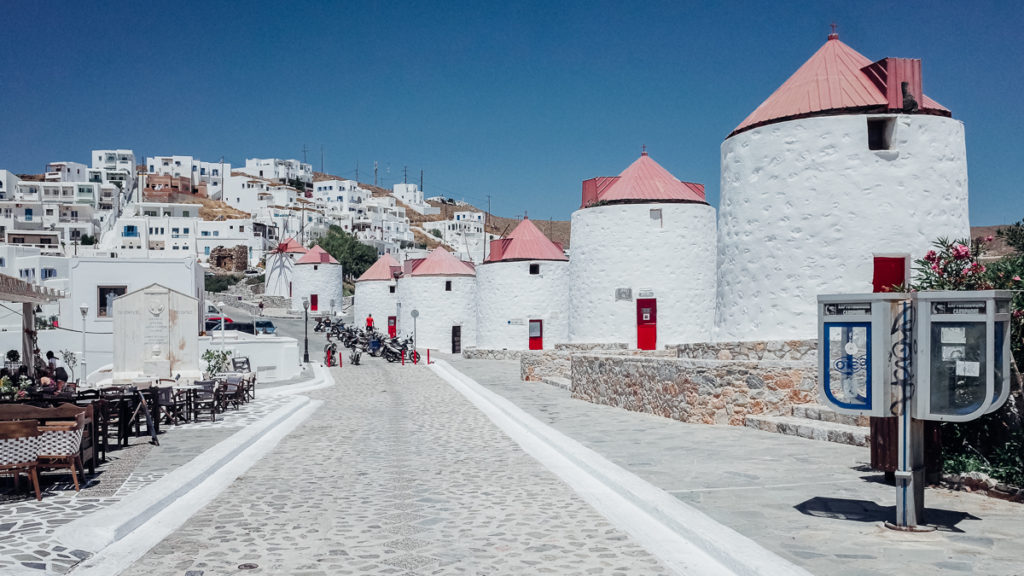
The car is rolling through narrow streets. The asphalt is not in good condition, and I’m wondering what will happen if another car appears. And indeed, we meet several cars on the way, but the driver always finds a way to avoid them. He tells me that I should visit Maltezana, the second settlement of the island, and then he talks about the beaches. The best ones are not easily accessible. It seems that Astypalaia is one of those places that finding pleasure is challenging. Challenge, of course, accepted.
The island is still sleeping when I reach Chora. Even though Astypalaia is part of the Dodecanese, there is architectural proximity to the Cyclades. The Chora is built on the top of a hill -put the blame on the pirates-, the houses are white, and there is a castle on top, called Querini Castle. That century-old castle owes its existence to the homonymous noble Venetian family. It offers a touch of stone in an otherwise whitewashed Chora.
But there is something else even more eye-catching in the windswept Chora. The windmills of Astypalaia are both a trademark and a landmark of the island. In the main square of Chora, I see a row of eight windmills standing next to each other. They are more than two hundred years old, but they look in perfect condition. Most of them are restored, but their use has changed. Being once upon a time the place to store crops, nowadays they serve other purposes: one of them hosts the tourist information of the island, another one is a small exhibition hall.
The windmills of Astypalaia (and of the Aegean sea as a whole) are an excellent example of innovation. These imposing buildings took advantage of one of the last free natural resources, the wind, for centuries. The northern winds of the Aegean Sea have set in motion for centuries the (so-called xetrocharis) windmills of Astypalaia and have offered to the locals the product that symbolizes the achievements of the working class: the bread.
All eight windmills of Astypalaia transform at night the island’s life. The local kids engage in pre-digital games, containing a ball and loads of voices. Young adults gather at the same time around the windmills: they kiss, talk, and narrate their experiences after a winter of absence. The search for more contemporary versions of bread and bliss has sent the younger generations to faraway places. It’s only the seniors, holders of stories and local dialect, that stick around the windmills all year long.
Summer voices transform the landscape and the noise of several warm nights in a row refreshes Astypalaia’s life. But the windmills of Astypalaia remain somehow intact; a building is, sometimes, a message.
The bus of Astypalaia

The bus of Astypalaia, pretty much like every other bus in the Greek islands, is a book on wheels. You will hear loads of stories, meet people, and get the best tips. Forget Tripadvisor or Foursquare; just ask the bus driver.
One day, there is this guy that the driver calls “The General.” He is an older guy with an elegant face. They seem to know each other well because they switch from jokes to politics in no time. The General occupies the seat next to the driver, and he seems to be the more privileged passenger. I know that he is not a General, but I won’t betray his real identity. All I can say is that he is an important figure. He has a camera with him, and he asks if the bus could stay an extra minute at the port. He wants to take a photo. All the passengers agree: yes, it is okay to stay that extra minute. Then the bus stops and the General runs towards the subject. “Such a nice guy,” the driver says. The General returns running. “Forty-three seconds,” he says.
The driver himself is a nice guy too. His bus is old, painted in pajama-blue, but the jokes keep the atmosphere alive. This is a private bus, the local state-owned bus doesn’t have a driver this summer. An older lady asks him if he can stop straight at her front door. “I can do everything,” the driver says. “I have even kicked the snakes away from the island,” he adds. The lady is up for some serious talk, though: “The worst snakes are the humans.” The driver laughs: “are there many humans that liked biting you, honey?”
He is usually talkative, and he drives with one hand. The island is his playground. He is not that often silent, but in the moments he is, he reminds me a bit of Patterson, the main character in that movie by Jim Jarmusch. He is humorous, he seems sensitive, and he keeps on driving the same routes every day, patiently.
Windswept Chora
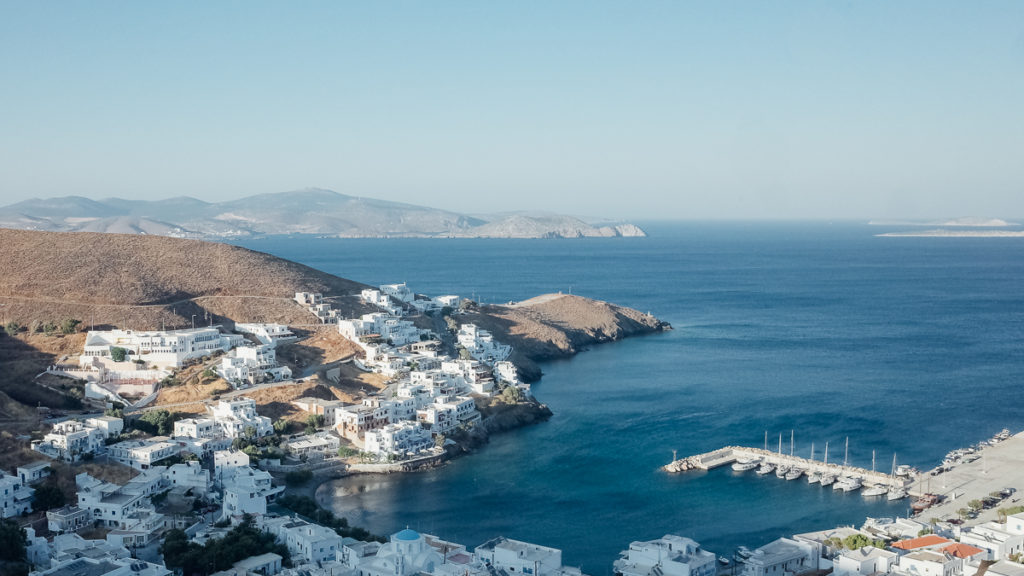
The Chora of Astypalaia comes with a peculiarity. It is located on the highest point of the island (like in most of the islands) but what makes it special is that it’s connected to the port. Normally, the Choras and the ports are two different areas, but here in Astypalaia the Chora actually expands to the port.
From the castle Querini on the top, the Chora of Astypalaia unrolls like a white curtain. Whitewashed houses and steep streets that can take your breath away. Steps, steps, and even more steps: an endless labyrinth of steps is somehow how this island is created. Astypalaia doesn’t have one center; it actually seems to have three. One around the Windmills, with cafes and tavernas, one at the Querini Castle with bars and a few options for food, and another one down at the port with some nightlife and tavernas.
I appreciate the fact that commercial life is split into pieces. It seems that there are no dead neighborhoods in Astypalaia, no areas that the planner decided to create blind spots. In every corner, you’ll find a supermarket, you’ll find a shop selling clothes, let alone the countless options for food and drinks. The Chora of Astypalaia is a fine example of how to create a small town where every street participates in the local life.
And then, there is, of course, the wind. Some nights the wind is so strong that you think the stray dogs will learn to fly. Plates, napkins, forks, hats, dresses, everything seems to be flying away. No one really wants to leave though, therefore you find every single object some meters away. It’s not a big surprise this kind of wind: it exists everywhere in the Aegean sea.
But what truly amazes me is the attitude of the locals against the wind. No long faces, no complaints (I’ve seen and heard them in other islands), they just ride their mopeds, and they roll up and down the streets of Astypalaia. Everyone owns a motorbike here, and it seems that the courage to walk up the white stairs lessens as time goes by. Sooner or later, everyone stops in front of the kiosk (in Greek: periptero) close to the windmills. It looks like the biggest showcase of mopeds in the Greek islands.
The queue in front of the kiosque is usually long. Inside the periptero, a spiritless lady supplies the queue with products. But the people gathered in front of her small window don’t seem to care that much about the products and the queue never really shortens. This is a meeting point, where people gather to chat or to make plans for the night. Wind, whispers, and people thirsty for talking: let the windy nights of Astypalaia unfold.
The pirates of Maltezana
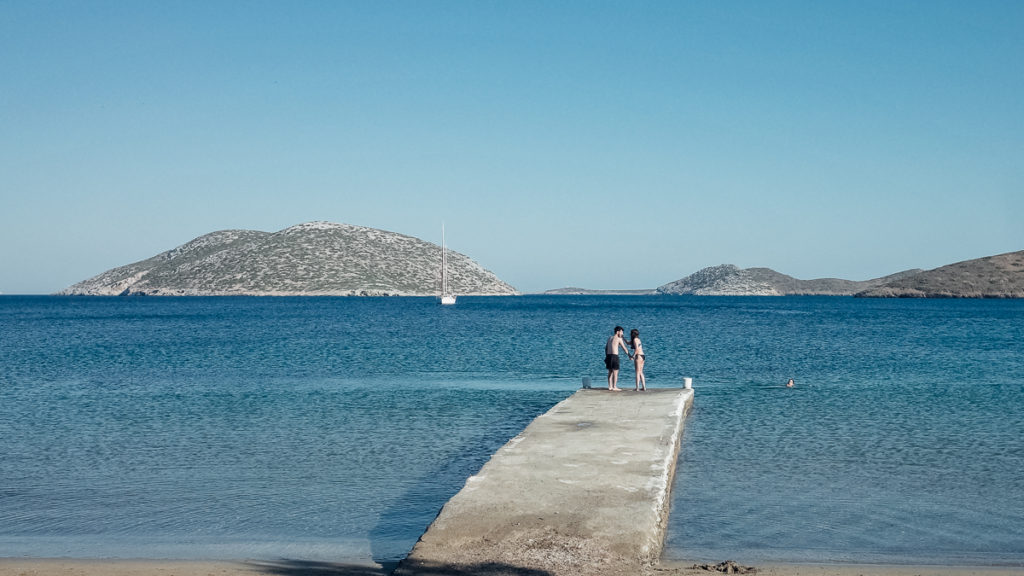
Maltezana (also known as Analipsi), is the second biggest settlement of Astypalaia. There are several beaches in the area, but I prefer the ones in the small bays. The water seems rather cold here, but there are tamarisks for everyone. The name of Maltezana probably derives from the Maltese pirates that used the bays of Maltezana as shelter.
Whitewashed houses and fertile fields rule the area around Maltezana. I walk from beach to beach and from bay to bay searching for a spot to lay down. There are spots for the loners like me, but most of the beaches are half-covered by sunbeds. The beach bars of Astypalaia remain somehow discreet, but I can’t say the same about the sunbeds. The pirates have failed to invade Maltezana, but I can’t really say the same about those ugly sunbeds that slowly transform the coastline of Astypalaia into lounges for the masses…
Smoke-free Astypalaia
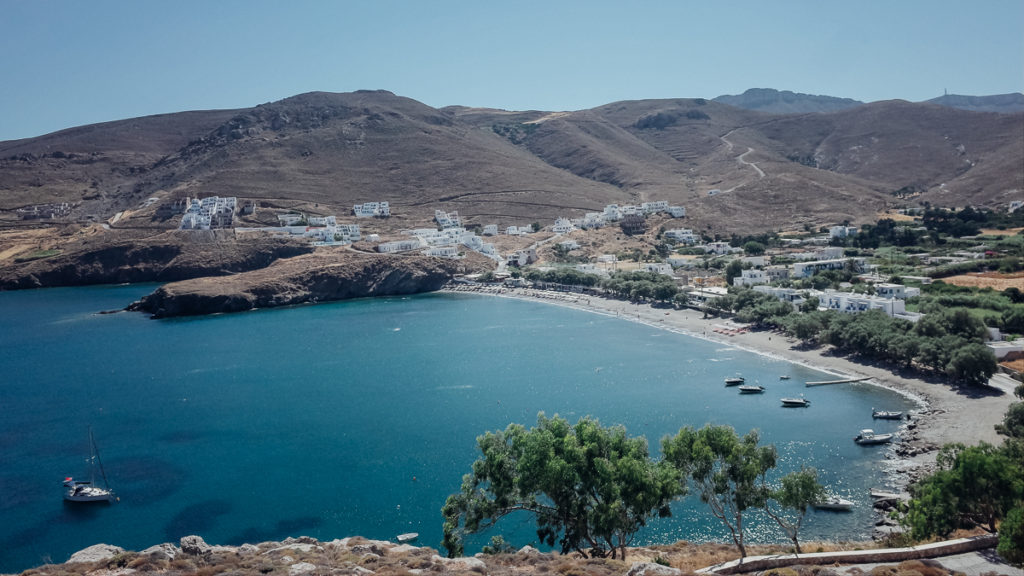
There is currently an initiative in Astypalaia, run by local organizations as well as by a tobacco company to make Astypalaia the first smoke-free island in the world. During the days of my visit, I try to observe how well this campaign is performing. That being said, I somehow try to check if people keep on smoking or if any of them use the IQOS devices, that heat the tobacco instead of burning it.
As a smoker (I also use IQOS the last months) I’m sensitive regarding this topic. To be honest, throughout my stay in Astypalaia, I didn’t observe a significant change in smoking habits compared to other islands. It seems to be more of a test campaign and less of a super concrete plan. Having a smoke-free island is not that easy anyway. Smoking is not prohibited on the island, there are ashtrays everywhere, people smoke regularly. I do observe though several people using the IQOS devices, and this is something that follows the path of the campaign. Time will only tell if the campaign succeeds or not, but as an experiment, it’s indeed interesting.
The Santorinisation of the Greek Islands
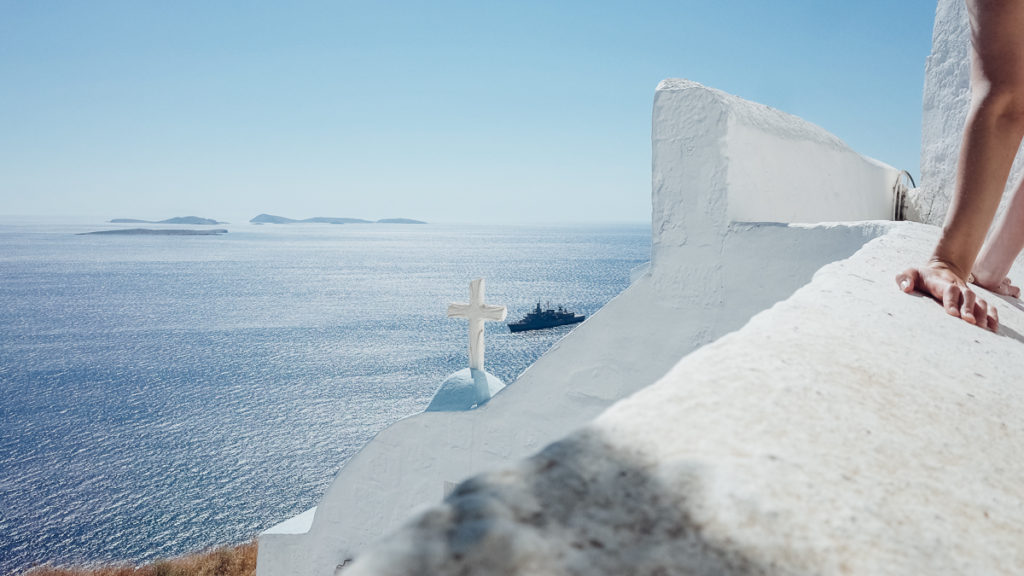
Throughout my stay in Astypalaia, I observe the development of the island. It’s my first time here, but after having seen loads of Greek islands, I try to see what do they have in common. Astypalaia is a beautiful island with friendly inhabitants. The landscape is fascinating -even though significantly milder than Anafi– and the sea is crystal clear. My days here are full of impressions: several beaches, countless talks with the locals, swimming, burning in the sun, eating fish. I have an excellent time, but still, something bothers me.
I have seen what mass tourism did in Santorini. Honestly, although the landscape of Santorini is outstanding, I find the island more stressful than a metropolis. Santorini has entirely surrendered to mass tourism, and I don’t think that this was the plan. Astypalaia won’t be like Santorini though: it doesn’t have the infrastructure nor the tendency I think. But yet, I believe that Astypalaia is one of these islands that wouldn’t mind converting in smaller versions of Santorini.
Mass tourism comes at a cost. Tasteless beach bars destroying serenity, boutique hotels, and chic restaurants that make the life of the inhabitants hard, loads of sunbeds, and a coastline that ain’t free anymore, all these are a few factors that transform islands. I tend to call this transformation of islands as Santorinisation, the tendency that some islands have to look like Santorini. Astypalaia is nowhere near that, but still, I observe some steps towards that direction.
The locals told me that they don’t plan to “sell” the island to tourism. I believe them -or better, I want to believe them. I do hope that Astypalaia will remain for a long time a peaceful place, where you can have the originality of the Greek islands together with relaxation. Whatever the future holds for Astypalaia, I’ll be there to observe it. And, of course, I’m going to write it to you.
Love,
George
More about the Greek Islands: Things to do in Astypalea, Divine Anafi, Introverted Sikinos, Majestic Schinoussa
*Get my FREE Travel Writing Course*
Buy the camera I use | Book your accommodation in Astypalaia
Pin it for later
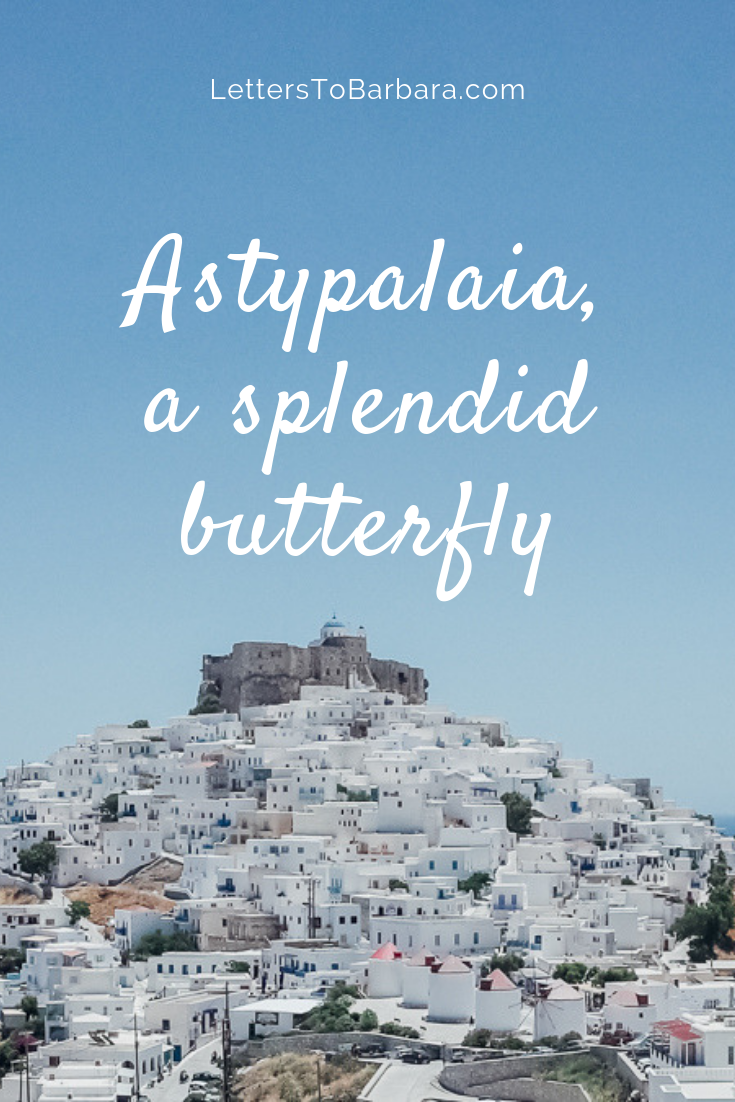
Please share, tweet, and pin if you enjoyed reading Astypalaia, a splendid butterfly. Your support keeps this website running and all the info up-to-date. 🙂
Last Updated on March 6, 2025 by George Pavlopoulos
